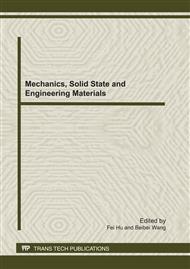p.266
p.271
p.275
p.280
p.287
p.291
p.296
p.301
p.307
Principle and Experiment of Ultrasonic Subtle Atomization in CMP
Abstract:
The method of chemical mechanical polishing (CMP) using slurry which was ultrasonic subtle atomized was researched, and the system of Ultrasonic Subtle Atomization—Chemical Mechanical Polishing was established. The effects of polish parameters on polishing were also investigated. The results show that the experimental system can fully realize the expected function of polishing, the use of slurry is about one-tenth of the amount of traditional CMP, material removal rate can reach 113.734nm/min and the surface roughness is similar to the surface roughness in the traditional way.
Info:
Periodical:
Pages:
287-290
Citation:
Online since:
July 2011
Authors:
Price:
Сopyright:
© 2011 Trans Tech Publications Ltd. All Rights Reserved
Share:
Citation:


